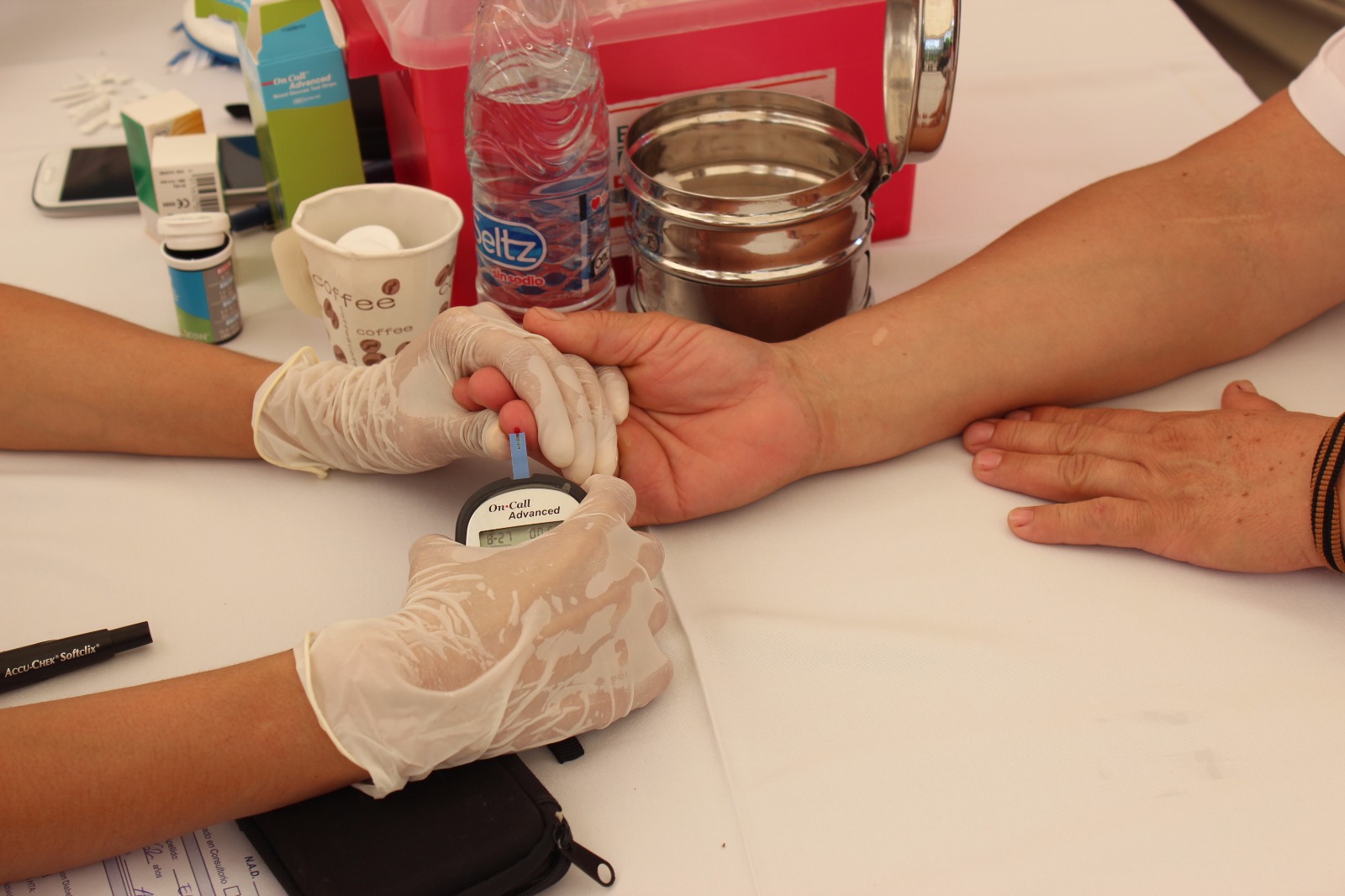“Diabetes Mellitus is a chronic metabolic disease characterized by increased blood glucose (hyperglycemia). Glucose is vital for health, since it is an important source of energy for the cells that make up muscles and tissues. It is the main source of fuel for the brain”, conceptualizes Dr. Atilio Castillo, president of the Paraguayan Society of Diabetology and coordinator of the Center for High Complexity in Diabetes of the General Hospital of Luque.
There are several types of diabetes, Type 2 represents 90 to 95% of cases in the adult population, according to Dr. Elizabeth Valinotti Delmas, head of the IPS Endocrinology Service and General Coordinator of the IPS Comprehensive Diabetes Care Network at the national level. .
“Type 1 diabetes, which is characterized by a total deficiency of insulin, is usually diagnosed in children or adolescents. Whereas, gestational diabetes is diabetes that appears for the first time in pregnancy and usually resolves after delivery has occurred. In addition, there is another type of diabetes that has to do with genetic diseases or that can be triggered by drugs or other types of events”, adds the doctor.
Both specialists pointed out that the only national data on the prevalence of diabetes in Paraguay are from 2011 of the 1st. National Survey of Chronic Diseases, where the prevalence of diabetes in adults was 9.7%. In said survey, an increase of 49% was presented in relation to the 1995 data. Since July 2022, the 2nd. Survey, whose data will be available in 2023; however, preliminary data from the Ministry of Health indicate that it would be reaching 13%.
Causes, signs and symptoms
Type 1 diabetes is a pathological process in which there is a destruction of the cells that produce insulin and therefore the use of exogenous insulin is imperative, either by subcutaneous injections or intravenously in case there is a acute decompensation.
In Type 2 Diabetes, there are several elements that can trigger its development, but Obesity is one of the most important factors for the appearance of Type 2 Diabetes and Gestational Diabetes.
Obesity is a chronic disease that progressively increases in the population of our country, Dr. Castillo indicated: “In 2011, the prevalence of Obesity in our country was 23% and it is estimated that, by 2030, it will reach 28%, for which the increase in Diabetes will be on the rise.”
“The classic symptoms of diabetes are polyuria (urinating a lot); polydipsia, (being very thirsty); weight loss that cannot be justified by a diet, also excessive tiredness and polyphagia (being very hungry); these are signs of diabetes decompensation and occur only when glucose is very high, however, there may be a very long time of the disease where these clear symptoms do not exist, but the patient may be suffering from hyperglycemia and this it occurs at the beginning of the disease”, diagnosed Dr. Valinotti.
“In addition, at the time of diagnosis, many of the patients already present complications of the disease such as: Diabetic retinopathy (20%), cardiovascular pathologies (up to 50%), among others”, added Dr. Atilio Castillo, from the Paraguayan Society of Diabetology.
How is diabetes diagnosed?
In order to reach an early diagnosis, it is important to carry out the investigation of it, using a Score called Findrisk, which helps to reach the population at risk with more precision, according to Dr. Castillo.
To evaluate the aforementioned scale, the doctor stated that every adult should ask themselves the following questions: Do I have a relative with Diabetes? Am I overweight or obese? Do I not do physical activity at least 5 times a week? If the answer is “yes”, you should see a doctor. If we add that, if a woman had Gestational Diabetes or a child who weighed 3.8 Kg, she should be checked every year, because she has an increased risk of Diabetes.
In turn, Dr. Valinotti pointed out: “Diabetes is detected by blood tests, where it is observed, for example, elevated glucose levels, that is, elevated blood sugar levels, (higher fasting glucose or equal to 126 on two occasions, or a glycated hemoglobin (HbA1c), which is a molecule that measures glucose in the last three months on average of 6.5% or more, or a glucose tolerance test, with 75 grams of anhydrous glucose, which after 2 hours shows glucose levels equal to or greater than 200), make the diagnosis of diabetes”.
Risks and complications
“We must also talk about prediabetes, which is a previous stage, let’s say, intermediate, where there is glucose that is above normal levels, but below the levels considered for diabetes as a diagnosis and it is a reversible state that needs treatment. intensive change of lifestyle and, in many cases, medication”, established Dr. Elizabeth Valinotti.
On the other hand, Dr. Atilio Castillo warned: “If a patient has Type 2 Diabetes and adequate treatment is not carried out, they will have complications such as Diabetic Retinopathy, it is the 1st. cause of blindness or amputations of the lower limbs, it is the 1st cause of non-traumatic amputation; the risk of cardiovascular disease is 4 times greater than the population without diabetes, 2 times more the risk of cerebrovascular accident, sexual dysfunction, dialysis admission, being the 1st. cause in our country and reduction of life in 12 years, in relation to the population without diabetes.
Prevention and awareness
World Diabetes Day is the awareness campaign about this disease that was established by the International Diabetes Federation (IDF) and the World Health Organization (WHO) in 1991, this year it bears the motto “Educate to protect the future”, appeals to raise awareness and give greater visibility to a disease that is estimated to affect 700 million people by 2045, according to the aforementioned organizations.
“Education accompanied by a healthy lifestyle, precisely, are the pillars of managing this disease, which is why the current approach to diabetes treatment is centered on the patient, where all preventive self-care is very important, as well as early diagnosis to improve the patient’s quality of life. Diabetes is a chronic disease that can be prevented and people with diabetes can avoid the complications of the disease”, explained endocrinologist Rosa Vega, from the IPS Ingavi Hospital.
“For this reason, it is important to keep the population always informed about diabetes, its consequences, and the need to screen, that is, look for diabetes in a population as susceptible as ours, since overweight and obesity , a sedentary lifestyle and our family history put us at risk of developing this disease”, added Dr. Valinotti.
Specialists in diabetes urged to join the activities carried out to raise awareness about this pathology. This Sunday there is a walk in the IPS Health Park, a joint initiative between the Paraguayan Society of Diabetology, the National Diabetes Program and the IPS Comprehensive Diabetes Care Network and many Medical Societies. In addition, there will be scientific proposals for bank staff and information capsules for all IPS policyholders.
For more information, visit the website: www.diabetesparaguay.com.py. Or, find out more news through social networks: Facebook and Instagram @Diabetesparaguay, Facebook: Comprehensive Diabetes Care Network IPS and on Twitter: @SPyDiabetes.


















